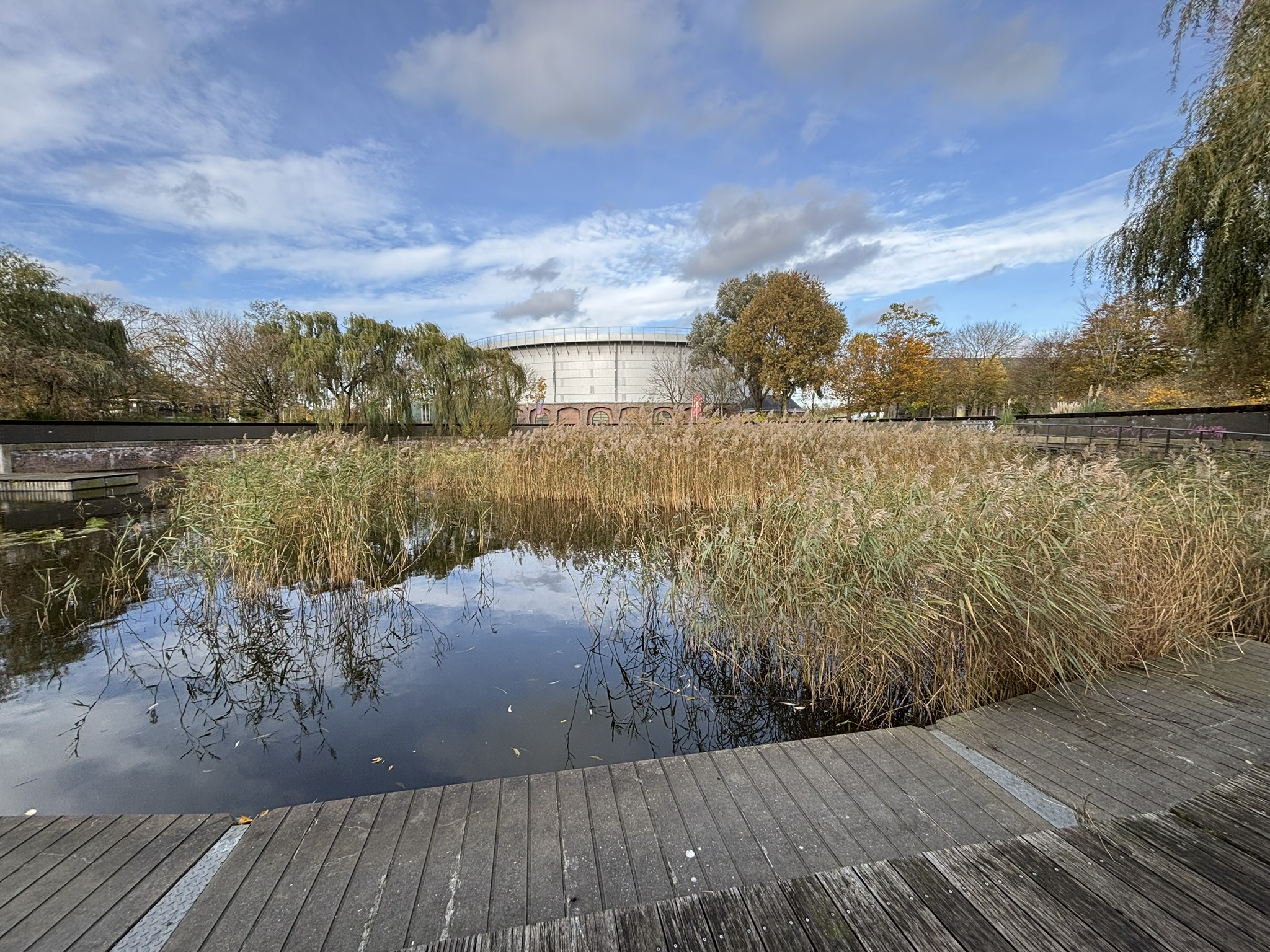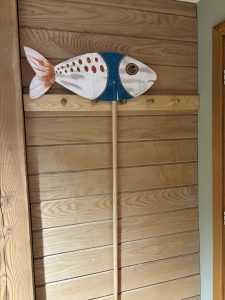Our Director of Operations, Jo Bradley, attended the Stormwater Europe 2025 event in Amsterdam in November and delivered a presentation about pollution from highway runoff.
She was also lucky enough to have some time to look around the city at their sustainable drainage installations. There were two installations that stood out as exemplary SuDS that we can certainly learn from in the UK.
The Amsterdam Rainproof project is pretty impressive. Amsterdam Rainproof is a platform that activates and stimulates different stakeholders to create a more resilient city for dealing with extreme rainfall. It collects and connects solutions, products and initiatives. Jo Said “I visited one of the solutions near Beatrix Park which is called a ‘water-retardant green strip’ which doesn’t do it justice. This device is deep, densely planted, full of trees and insects and leaf matter and it’s just gorgeous.” It was bedecked in its Autumn colours when Jo visited and it was easy to imagine small creatures hibernating in there, and to think of the eggs and larvae for myriad insects that will over-winter in there. Devices like this, similar to the Grey-to-Green installation in Sheffield, are an essential part of urban design. They create real, meaningful habitat for wildlife, where creatures can live out much of their life-cycle, including feeding and reproducing, as well as sheltering from the extreme effects of climate change. We need to include devices like this wherever we can, alongside the other, smaller devices such as tree pits and swales, to create a mosaic of habitats for wildlife and enough space for water to be managed well.
The other site that Jo visited was on a partially dismantled 19th century industrial site at Westerpark in Amsterdam, with vestiges of its industrial layout intact where designers have delivered a magnificent space for water, people and nature. This project for a new public park on the heavily contaminated site of a former gas factory had to cope with the contaminated soil that could not be taken offsite to create new problems elsewhere. So the old gasometers were capped and turned into the lovely water features you can see in the picture. The website describes how “Salix babylonica and alba sistris skirt the edge of the remaining basement structures of the gasholders which have been filled with the worst pollution and capped to become a contemplative water-lily pool and verdant aquatic garden in which floating timber walkways and terraces have been inserted.” They were lovely on the day that Jo visited, with wildfowl bobbling about, a heron on the prowl and a local chap feeding the ducks. Well done Amsterdam – the SuDS were fabulous. Do you know of any other cities around the World with excellent SuDS?





